
Seven Days in Tibet Expedition Dispatch
October 31, 2012 – Buddhism in Tibet
The breakfast buffet was filled with eastern food and a nod to western tastes (the ubiquitous hard boiled eggs) If you want western food, I think you are going to lose weight here. Fred and I are not going to lose weight. And still no heating, so we have taken to wearing long underwear to meals.
Today we visited the Summer Palace of the Llamas, which is a misnomer because it is several palaces spread over about 100 acres (36 hectares) of park. The earliest palace is a very modest affair dating from hundreds of years ago. The most recent was built in the 1950’s by the current Dalai Llama and is the most palatial with reception rooms and a western bathroom and a solid gold throne. Throughout our tour of this last palace, monks chanted in the background.
There are far fewer monks and nuns in Tibet now, partly because a special license is required to become a priest or a nun and partly because young people, as in other religions, are not as eager to enter the priesthood. When you watch them in their western dress with cell phones and western music, you can understand.
In the afternoon we visited Jokhang, the most holy temple in Tibet. Here, we watched the penitent prostrate themselves in front of the temple. As we toured the temple, we became aware of how ancient the belief in Buddhism is here in Tibet. Parts of the temple date from the early 7th century. It has survived vandalism, wars and cultural revolutions and is still here to tell the story of a religion and a culture.
Now, we are putting on our long underwear to go for dinner. It feels a little like Lobuche but with better bathrooms and warmer bedrooms.
– By Wendy Kinsella
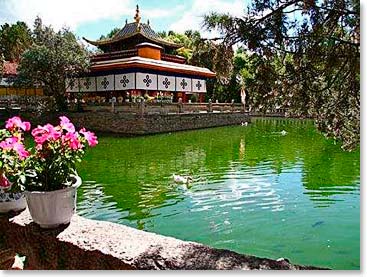
Norbulingka, served as a Dalai Lama summer residence since 1780 until the 14th Dalai Lama’s exile in 1959. This Palace is recognized as a UNESCO World Heritage Site; built by the 7th Dalai Lama.
Photo Courtesy www.cultural-china.com
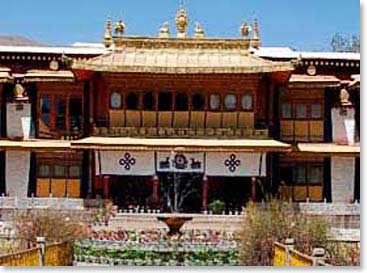
Norbulingka is a unique representation of Tibetan architecture.
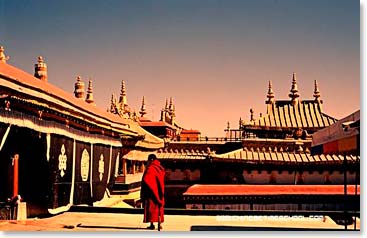
Jokhang temple is the ultimate pilgrimage destination for Tibetan Pilgrims
Photo Courtesy www.chinesetimes.school.com
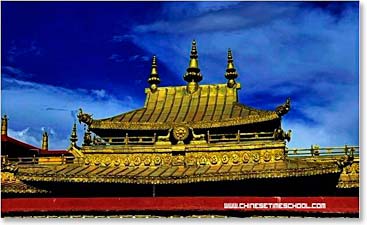
Jokhang temple, the most sacred temple in Tibet is a mixture of Indian, Chinese Tang Dynasty and Nepalese design. It is also an UNESCO World Heritage Site.
More about Jokhang temple: “The Jokhang Temple was built on the former site of a lake. According to the legend, the lake site was chosen after many failed attempts to build a temple in the region. Prior to this, every time a temple was built, it would collapse. Confused by this phenomenon, Princess Bhrikuti turned to Wen Cheng for help. Being a learned woman, Wen Cheng told the Princess that the geography of Tibet was very much like a hag, with the lake at the heart. In order to build the temple, Wen Cheng advised they must demolish the hag by filling and leveling the lake using 1,000 goats to carry soil from a mountain far away. When the temple was done, it was called Ra-Sa-Vphrul-Snang ('ra' meaning goat and 'sa' meaning earth in Tibetan) to commemorate those goats.
Whether the legend is true or not, this temple brought Buddhism into Tibet and became an inseparable part of Tibetan history and culture. The city of Ra-Sa grew around the temple and over time, become known as Lhasa, a holy land.”
– Courtesy Chinese Times School
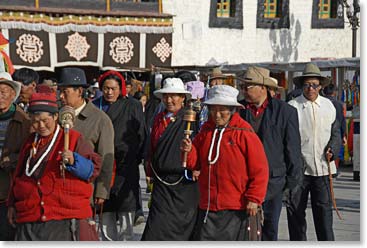
Tibetans at the Jokhang Square

